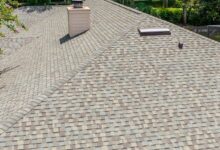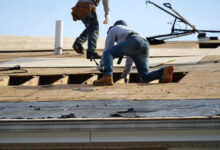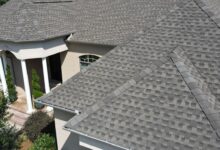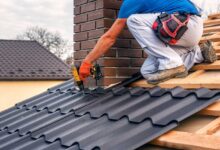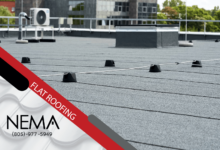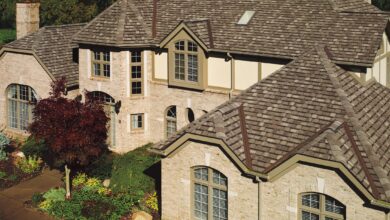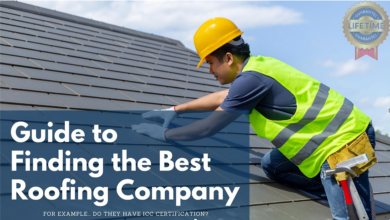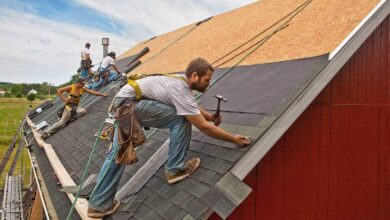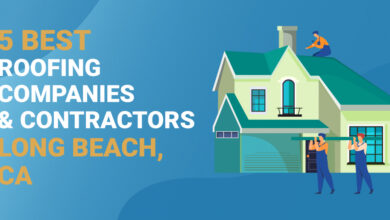Aluminum Roof Repair Near Me
Aluminum Roof Repair Near Me: Finding a reliable contractor for aluminum roof repair can be crucial for protecting your home and its value. This guide explores common aluminum roof problems, from weather damage to age-related corrosion, offering insights into identifying reputable local services and understanding the repair process. We’ll cover everything from cost estimation and budgeting to maintenance and warranty considerations, equipping you with the knowledge to make informed decisions.
Understanding the nuances of aluminum roof repair is essential for homeowners. This involves recognizing the various types of damage, such as punctures, leaks, and seam separation, and knowing how to properly assess the extent of the problem. This guide provides a comprehensive overview, including step-by-step repair techniques and advice on choosing a qualified contractor.
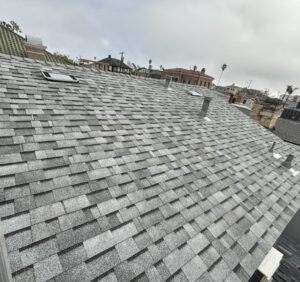
Understanding Aluminum Roof Issues
Aluminum roofing, while durable, is susceptible to various problems over its lifespan. Understanding these issues is crucial for proactive maintenance and timely repairs, extending the life of your roof and protecting your home. Ignoring problems can lead to costly repairs down the line.
Common Aluminum Roof Problems
Aluminum roofs, despite their inherent strength and lightweight nature, face several challenges. These range from cosmetic imperfections to structural damage, significantly impacting the roof’s longevity and effectiveness. The most frequent issues stem from weather-related damage, age-related deterioration, and improper installation.
Weather-Related Damage
Extreme weather conditions can significantly impact the integrity of an aluminum roof. Hail, for example, can cause dents and punctures, compromising the roof’s water-shedding capabilities. Imagine golf ball-sized hail impacting the surface – the resulting damage can be extensive, requiring immediate repair to prevent leaks. High winds can lift and tear roofing panels, particularly at seams and edges, creating openings for water infiltration. Heavy snowfall can overload the roof structure, leading to sagging or even collapse if the supporting framework is insufficient. The weight of accumulated snow and ice can also cause damage to flashing and other vulnerable areas.
Age and Corrosion
The effects of time and exposure to the elements are unavoidable. Over time, aluminum can corrode, particularly in coastal areas with high salinity. This corrosion weakens the material, making it more susceptible to damage from weather events. UV radiation from sunlight can also degrade the protective coatings on the aluminum, leading to fading and discoloration. Furthermore, age can lead to fatigue in the metal, increasing its vulnerability to stress and potentially causing cracks or tears. This is especially noticeable in areas subject to significant temperature fluctuations.
Comparison of Aluminum Roof Damage
| Type of Damage | Cause | Appearance | Severity |
|---|---|---|---|
| Dents and Punctures | Hail, falling debris | Visible indentations or holes | Varies; minor dents may be cosmetic, while large punctures require repair |
| Cracks and Tears | Age, wind damage, improper installation | Linear breaks in the aluminum | Significant; requires immediate repair to prevent leaks |
| Corrosion | Exposure to moisture and salt | Pitting, discoloration, white powdery residue | Varies; can range from superficial to structural damage |
| Lifting and Separation | Wind, improper fastening | Gaps between panels, curled edges | Significant; requires immediate repair to prevent leaks and further damage |
Locating Local Repair Services
Finding reliable aluminum roof repair specialists requires a strategic approach. A damaged roof needs prompt attention, and choosing the right contractor is crucial for a lasting, effective repair. This section outlines effective methods for identifying and vetting potential service providers in your area.
Locating qualified aluminum roof repair specialists involves several key steps. These steps ensure you find a contractor with the necessary experience, licensing, and insurance to handle your specific roofing needs.
Strategies for Finding Local Repair Services
Several avenues exist for discovering aluminum roof repair specialists near you. A multi-pronged approach increases the chances of finding a reputable and skilled contractor.
- Online Search Engines: Utilize search engines like Google, Bing, or DuckDuckGo, using keywords such as “aluminum roof repair near me,” “aluminum roofing contractors,” or your city/region + “aluminum roof repair.” This will generate a list of local businesses offering these services.
- Online Directories: Explore online business directories such as Yelp, Angie’s List, or HomeAdvisor. These platforms often include customer reviews and ratings, providing valuable insights into the quality of service offered by different contractors.
- Referral Networks: Ask friends, family, neighbors, or colleagues for recommendations. Word-of-mouth referrals can be a powerful tool, providing firsthand accounts of a contractor’s reliability and workmanship.
- Local Building Supply Stores: Hardware stores and building supply centers frequently have lists of local contractors they recommend or have worked with in the past. This is a valuable resource, particularly for finding specialists familiar with local building codes and materials.
The Importance of Checking Online Reviews and Ratings
Online reviews and ratings serve as a crucial filter when selecting a contractor. They provide a glimpse into the experiences of previous clients, highlighting both positive and negative aspects of the service. Pay close attention to recurring themes in reviews, both positive and negative, to gain a comprehensive understanding of a contractor’s reputation. A high volume of positive reviews suggests consistent quality, while a pattern of negative feedback should raise concerns. For example, consistent complaints about missed deadlines or shoddy workmanship should be taken seriously. Look for reviews that provide specific details about the contractor’s work and communication style.
Verifying the Credentials of Repair Companies
Verifying the credentials of a roofing company is a critical step to ensure you are hiring a qualified and trustworthy professional. Several methods exist to confirm a contractor’s legitimacy and experience.
- Check for Licensing: Contact your local licensing board or relevant authority to verify the contractor’s license is valid and up-to-date. This ensures they meet minimum standards of competence and are legally authorized to operate in your area.
- Confirm Insurance Coverage: Request proof of liability and workers’ compensation insurance. This protects you from financial responsibility in case of accidents or damage during the repair process. Ensure the policy is current and covers the scope of the work.
- Request References: Ask for a list of previous clients and contact them to inquire about their experience with the contractor. This provides firsthand feedback beyond online reviews.
- Verify Business Registration: Check if the company is registered with the appropriate business registration authorities in your state or region. This confirms the legitimacy and longevity of the business.
Finding Licensed and Insured Contractors
Securing a licensed and insured contractor offers significant protection and peace of mind. Licensed contractors have demonstrated competence and adherence to industry standards, while insurance coverage safeguards you from potential financial liabilities. Many online directories allow filtering by licensing and insurance status, simplifying your search. Directly contacting licensing boards or insurance providers can provide independent verification of the contractor’s credentials. It’s vital to remember that a contractor’s license and insurance policy should be current and relevant to the type of work being undertaken.
Repair Process Overview
Repairing an aluminum roof involves a systematic approach to identify, access, and rectify damage. The process requires careful inspection, appropriate material selection, and precise execution to ensure a long-lasting and leak-free repair. Safety is paramount throughout the entire process, and professional assistance should be sought for extensive or complex repairs.
The overall repair process typically begins with a thorough inspection to identify the extent and nature of the damage. This is followed by preparation of the affected area, application of appropriate repair materials, and final inspection to ensure the repair is complete and effective.
Aluminum Roof Damage Inspection
A comprehensive inspection is crucial before initiating any repairs. This involves visually assessing the entire roof for signs of damage such as punctures, cracks, seam separation, corrosion, and loose or missing fasteners. A close examination of valleys, flashings, and around penetrations (e.g., chimneys, vents) is particularly important as these areas are prone to leaks. Using binoculars can aid in viewing hard-to-reach areas. If significant damage or widespread corrosion is present, a professional assessment might be necessary.
Repair Techniques for Common Aluminum Roof Problems
Different repair techniques are employed depending on the type and extent of the damage. Punctures, for example, can often be repaired with a specialized aluminum patch and sealant. Larger holes may require more extensive patching, potentially involving the installation of backing plates for added strength. Seam separation requires careful cleaning of the affected area, followed by the application of a high-quality sealant designed for aluminum roofing. Leaks often originate from compromised seams or punctures and require targeted repair of the source, not just surface treatment. Corrosion necessitates cleaning the affected area, removing loose material, and applying a corrosion inhibitor before patching or sealing.
Roof Surface Preparation Before Repair
Proper preparation of the roof surface is critical for ensuring the adhesion and longevity of the repair. The area surrounding the damage must be thoroughly cleaned to remove dirt, debris, loose paint, and any signs of corrosion. This can involve using a wire brush, scraper, or pressure washer (used cautiously to avoid damaging the aluminum). The surface should then be degreased using a suitable solvent to remove any oils or contaminants that might hinder adhesion. Once clean and dry, the surface is ready for the application of sealant or patches. The surface should be completely dry before proceeding with any repair.
Cost Estimation and Budgeting
Accurately estimating the cost of aluminum roof repair is crucial for effective budgeting and avoiding unexpected expenses. Several factors significantly influence the final price, making it essential to understand these variables before engaging a contractor. A transparent and detailed cost breakdown from your chosen contractor will allow for informed decision-making.
The cost of aluminum roof repair varies greatly depending on several key factors. These factors interact to determine the overall expense, and understanding them will help you better manage your budget.
Factors Influencing Repair Costs
Several key elements contribute to the overall cost. These include the extent of the damage, the type of repair needed, the accessibility of the roof, the prevailing labor rates in your area, and the cost of materials. For instance, a small leak repair will naturally cost less than a complete roof section replacement. Similarly, a roof easily accessible from the ground will require less time and equipment than one requiring specialized scaffolding or lifts.
Typical Price Ranges for Aluminum Roof Repairs
Repair costs can range significantly depending on the complexity and extent of the work. A minor repair, such as patching a small hole or replacing a few damaged panels, might cost between $200 and $800. More extensive repairs, involving the replacement of multiple panels or sections of the roof, could range from $1,000 to $5,000 or more. Complete roof replacements, while not strictly a “repair,” can cost significantly more, ranging from $5,000 to $20,000 or even higher depending on the size of the roof and material costs. These price ranges are estimates and can vary based on location and specific circumstances.
Cost Breakdown: Labor and Materials
| Cost Item | Description | Typical Cost Range | Percentage of Total Cost (Estimate) |
|---|---|---|---|
| Labor | Hourly rate for skilled roofing professionals, including time for assessment, material handling, and cleanup. | $50-$100/hour | 40-60% |
| Aluminum Panels | Cost per panel varies depending on size, gauge, and quality. | $25-$150/panel | 20-30% |
| Fasteners & Sealants | Screws, rivets, caulking, and other materials required for securing and sealing panels. | $50-$200 | 10-15% |
| Equipment Rental (if applicable) | Scaffolding, lifts, or other specialized equipment. | $100-$500 | 5-10% |
Note: These cost ranges are estimates and may vary based on geographic location, contractor rates, and the specifics of the repair job.
Obtaining Accurate Cost Estimates
To obtain accurate cost estimates, it’s crucial to request detailed proposals from multiple reputable contractors. Ensure the proposals clearly outline the scope of work, including all materials and labor costs. Don’t hesitate to ask clarifying questions about any unclear items. Comparing multiple estimates allows for a more informed decision, helping to identify both the most cost-effective and reliable contractor. Be wary of unusually low bids, as these may indicate compromises in quality or workmanship. Confirm that the contractor is properly licensed and insured for your protection.
Maintenance and Prevention
Proactive maintenance significantly extends the lifespan of your aluminum roof, saving you money on costly repairs in the long run. Regular inspections and preventative measures are key to ensuring your roof remains in optimal condition and protects your home for years to come. Neglecting these can lead to premature deterioration and expensive replacements.
Regular roof inspections are crucial for identifying potential problems early, before they escalate into major issues. Early detection allows for timely and cost-effective repairs, preventing extensive damage and ensuring the longevity of your roof. A thorough inspection allows for the identification of minor problems such as loose fasteners, damaged sealant, or signs of corrosion, enabling prompt remediation. Ignoring these issues can lead to leaks, structural damage, and ultimately, the need for complete roof replacement.
Roof Inspection Schedule
A consistent inspection schedule is essential for proactive roof maintenance. Ideally, you should conduct a visual inspection of your aluminum roof at least twice a year – once in spring and again in autumn. These inspections should check for any signs of damage, debris buildup, or corrosion. A more thorough professional inspection by a qualified roofing contractor should be scheduled every three to five years, depending on your climate and the condition of your roof. This professional assessment will provide a comprehensive evaluation of your roof’s condition and identify any potential problems that might be missed during a visual inspection. For example, a professional might detect subtle signs of underlying structural issues or hidden corrosion that could compromise the roof’s integrity.
Preventative Measures for Aluminum Roofs
Several preventative measures can significantly extend the life of your aluminum roof. These measures focus on protecting the roof from the elements and preventing damage. Regular cleaning and maintenance are paramount.
- Regular Cleaning: Remove debris such as leaves, branches, and dirt regularly. This prevents moisture buildup and potential corrosion. A soft-bristled brush and a gentle stream of water are sufficient for most cleaning tasks. Avoid using high-pressure washers, as they can damage the aluminum surface. For stubborn stains, a mild detergent solution can be used, followed by thorough rinsing with clean water.
- Gutter and Downspout Maintenance: Ensure gutters and downspouts are clean and free of obstructions. Clogged gutters can lead to water overflow, causing damage to the roof and surrounding areas. Regular cleaning, ideally twice a year, prevents water damage and ensures proper water drainage away from the house.
- Sealant Inspection and Repair: Inspect sealant around flashing, vents, and other penetrations regularly. Repair any cracks or damage immediately to prevent leaks. Using a high-quality sealant designed for aluminum roofs is crucial for long-term protection.
- Tree Trimming: Keep overhanging branches trimmed away from the roof. Branches can scratch the aluminum surface, causing damage and providing pathways for moisture penetration. Regular trimming prevents damage and ensures the free flow of air around the roof.
Cleaning and Protecting the Aluminum Roof Surface
Cleaning your aluminum roof is vital for maintaining its appearance and extending its lifespan. Avoid harsh chemicals or abrasive cleaners, as these can damage the aluminum’s protective coating. A simple solution of mild detergent and water is usually sufficient for most cleaning tasks. Always rinse thoroughly with clean water after cleaning. Consider applying a specialized aluminum roof sealant every few years to provide added protection against the elements and enhance the roof’s longevity. This sealant acts as a barrier against UV radiation, corrosion, and other environmental factors that can degrade the aluminum surface. For example, a properly applied sealant can prevent the formation of oxidation, maintaining the roof’s original appearance and structural integrity.
Warranty and Guarantees
Understanding the warranty offered by your aluminum roof repair contractor is crucial for protecting your investment and ensuring you receive the quality service you expect. A comprehensive warranty demonstrates the contractor’s confidence in their work and provides recourse should unforeseen issues arise. Ignoring warranty details could leave you responsible for costly repairs down the line.
Warranty terms and conditions vary significantly between contractors. It’s essential to carefully review these details before agreeing to any work. Understanding the scope of coverage, duration, and limitations will help you make an informed decision and avoid potential disputes later.
Types of Warranties
Contractors typically offer several types of warranties. These may include material warranties, covering defects in the materials used; workmanship warranties, covering the quality of the installation; and combined warranties, encompassing both materials and workmanship. Some contractors might also offer extended warranties for an additional fee, providing longer-term protection. The specific terms of each warranty, including the duration and limitations, should be clearly outlined in a written agreement. For example, a material warranty might cover defects for 10 years, while a workmanship warranty might cover issues for 5 years. A combined warranty might offer 5 years of coverage for both materials and workmanship.
Filing a Warranty Claim
The process for filing a warranty claim usually involves contacting the contractor directly to report the issue. You’ll likely need to provide documentation such as the original contract, photos or videos of the damage, and a detailed description of the problem. The contractor will then assess the claim and determine whether the damage falls under the warranty terms. If approved, the contractor will typically schedule repairs or replacements as outlined in the warranty agreement. Be sure to keep all relevant documentation in a safe and accessible place. For instance, if a section of your repaired roof begins to leak after three years, contacting the contractor with photographic evidence and a detailed description of the leak would initiate the claim process. The contractor’s response will be determined by the terms of the warranty they provided.
Questions to Ask Contractors About Warranties
Before hiring a contractor, it is vital to clarify the warranty details. Asking specific questions ensures a clear understanding of your rights and responsibilities. For example, inquire about the specific duration of the warranty, what types of damage are covered, what is not covered, the process for filing a claim, and whether there are any limitations or exclusions. Asking about the contractor’s track record with warranty claims and their responsiveness to customer issues is also advisable. Examples of questions include: “What is the length of your warranty for materials and workmanship?”, “Are there any exclusions or limitations to your warranty?”, and “What is your process for handling warranty claims?”. Getting clear, written answers to these questions protects you from potential future problems.
Visual Aids
Understanding the visual aspects of aluminum roof repair is crucial for homeowners to assess damage accurately and communicate effectively with repair professionals. Visual inspection is the first step in any repair process, and knowing what to look for can save time and money. The following descriptions will help you understand what constitutes proper repairs and how to differentiate between minor and significant damage.
Properly Sealed Aluminum Roof Seam
A properly sealed aluminum roof seam should appear as a continuous, unbroken line. There should be no gaps or visible separation between the overlapping panels. The sealant itself, often a specialized silicone or butyl rubber, should be smooth, even, and the same color as the aluminum, or a very close, unobtrusive shade. Any visible beads or unevenness might indicate improper application or potential future leakage. The sealant should completely fill the seam, creating a watertight barrier. A properly sealed seam will appear seamless and integrated with the surrounding panels.
Correctly Repaired Puncture in Aluminum Roofing
A correctly repaired puncture in aluminum roofing will show a smooth, filled area around the hole, seamlessly blending with the surrounding surface. The repair should be flush with the existing roofing, with no noticeable bumps or dips. The patch material, often a piece of matching aluminum sheet, will be securely fastened, likely using rivets or sealant. The repair should be free of cracks or signs of deterioration. A successful repair will be practically invisible once completed. The surrounding aluminum should show no signs of stress or damage from the repair process itself.
Visual Differences Between Minor and Major Aluminum Roof Damage
Minor aluminum roof damage typically involves small punctures, minor dents, or superficial scratches. These imperfections may cause minor cosmetic issues, but generally do not compromise the structural integrity of the roof. In contrast, major aluminum roof damage includes significant punctures, large dents, significant corrosion, or missing panels. These types of damage can compromise the roof’s ability to effectively shed water, leading to potential water damage within the building. A significant tear or rip in a panel would be considered major damage, while a small, superficial scratch would be minor. Major damage often necessitates extensive repair or panel replacement, whereas minor damage can often be addressed with simple patching or sealant.
Replacing a Damaged Aluminum Roof Panel
Replacing a damaged aluminum roof panel involves several steps, visually identifiable. First, the damaged panel will be carefully removed, often requiring cutting or unscrewing fasteners. The surrounding panels will be examined for further damage. Next, a new panel of the same size, material, and color will be fitted into the opening. The new panel will be secured in place using appropriate fasteners, such as screws or rivets, ensuring a tight and even fit. Finally, the seams around the new panel will be sealed with a suitable sealant, creating a watertight bond. The completed repair should appear seamless and indistinguishable from the surrounding panels. The overall appearance will be consistent with the rest of the roof, with no noticeable discrepancies in color, texture, or panel alignment.
Epilogue
Successfully repairing your aluminum roof requires a combination of knowledge, careful planning, and the right professional assistance. By understanding the common issues, employing preventative maintenance strategies, and selecting a reputable contractor, you can ensure the longevity and structural integrity of your roof. Remember to always obtain multiple quotes and thoroughly review warranties before commencing any repair work. Protecting your investment is key.

